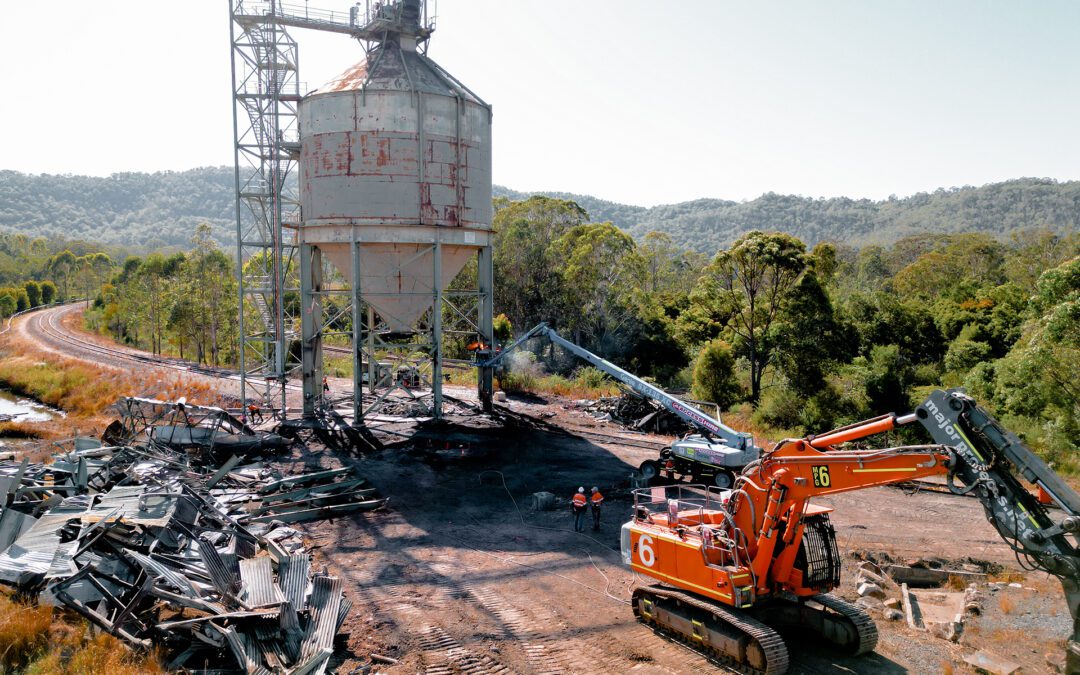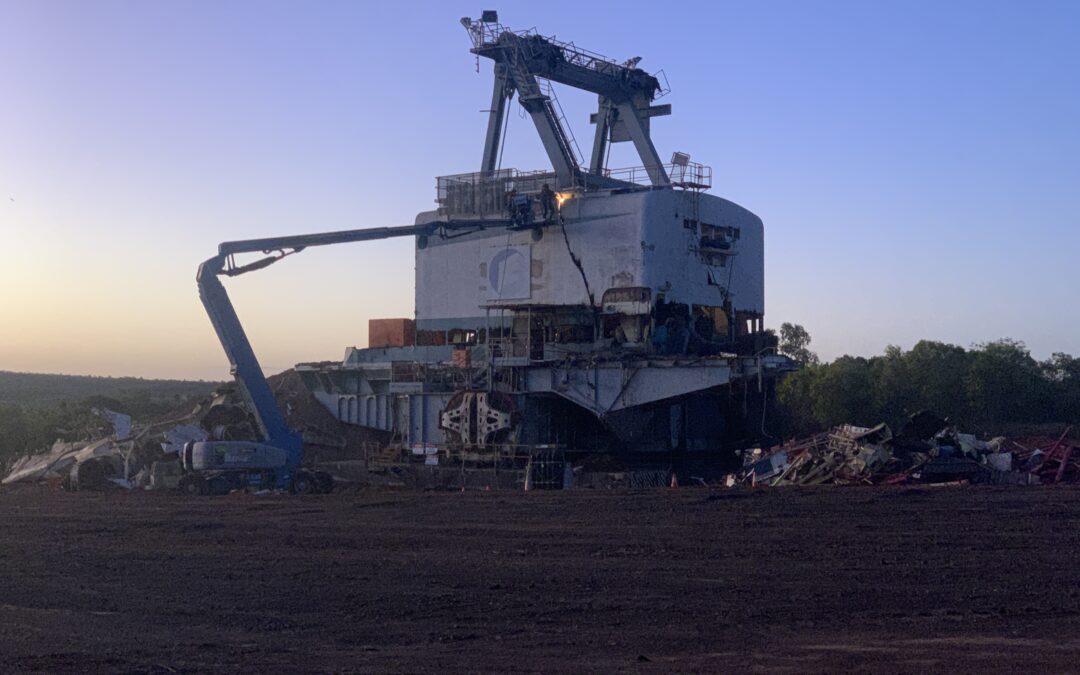The Demolition Process
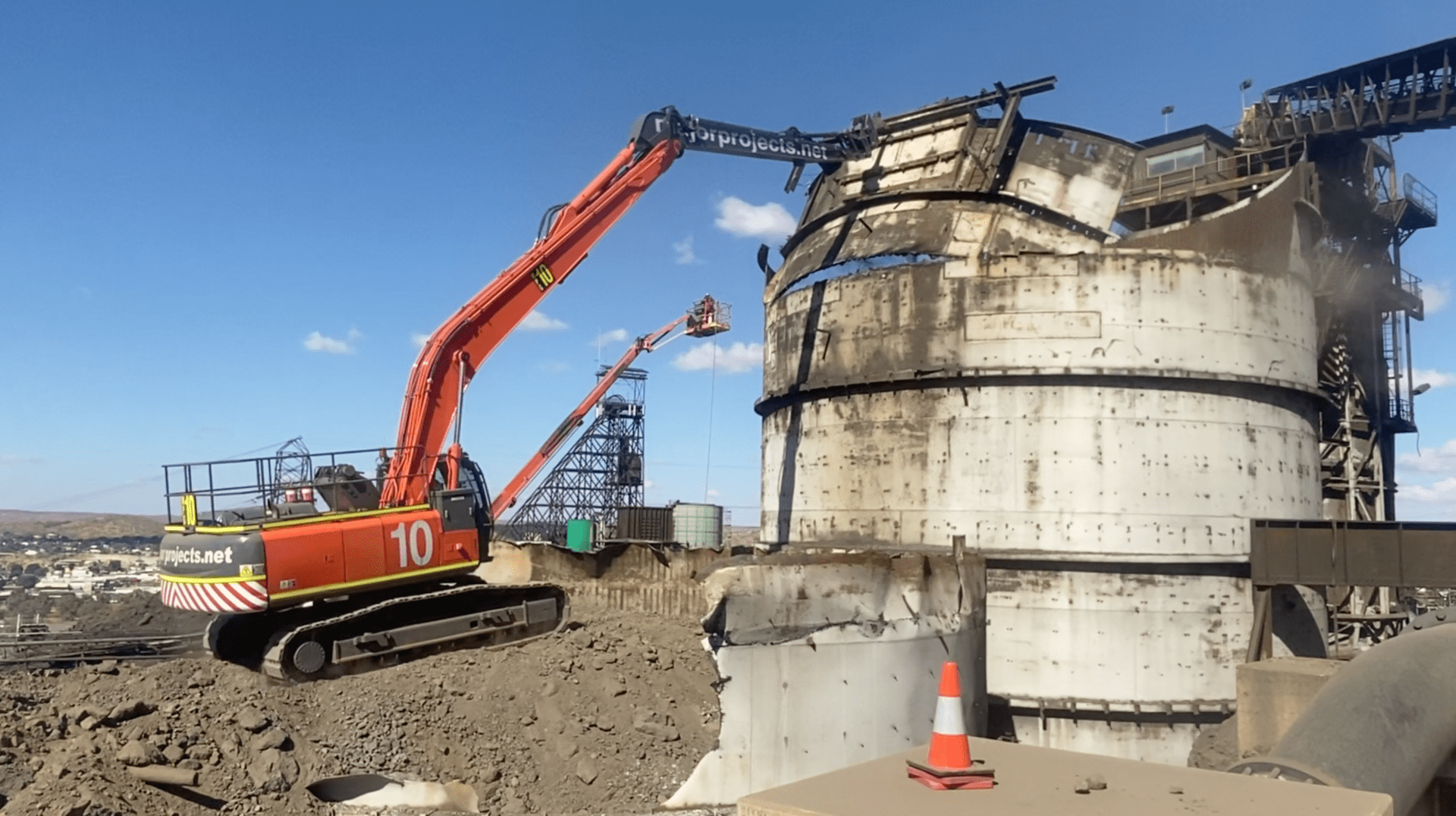
Demolition is a high-risk activity that must be executed systematically in line with all appropriate legislation. A thorough and efficient demolition process will work to prevent costly delays and dangers in the subsequent stages of your commercial, industrial or marine project, helping to keep the overall budget and schedule on track.
Below, our experts explain the demolition process in detail so that you can better understand the steps taken to ensure a safe, cost-effective and timely result.
What is demolition?
Demolition refers to the dismantling or destruction of a fixed or moveable structure, including buildings, infrastructure and equipment. Importantly, this process does not concern the removal of structures utilised to assist construction.
Rather, a structure is typically demolished for one of the following reasons:
- Loss of structural integrity;
- The structure no longer serves its intended use;
- Parts of the structure have to be renovated; or
- The property owner plans to sell the cleared land.
If a compromised structure is not demolished when required, it may pose a serious danger to occupants and those in the nearby vicinity. At the same time, careful planning is critical to ensuring that the demolition process itself is performed safely. Read on to discover the key stages involved.
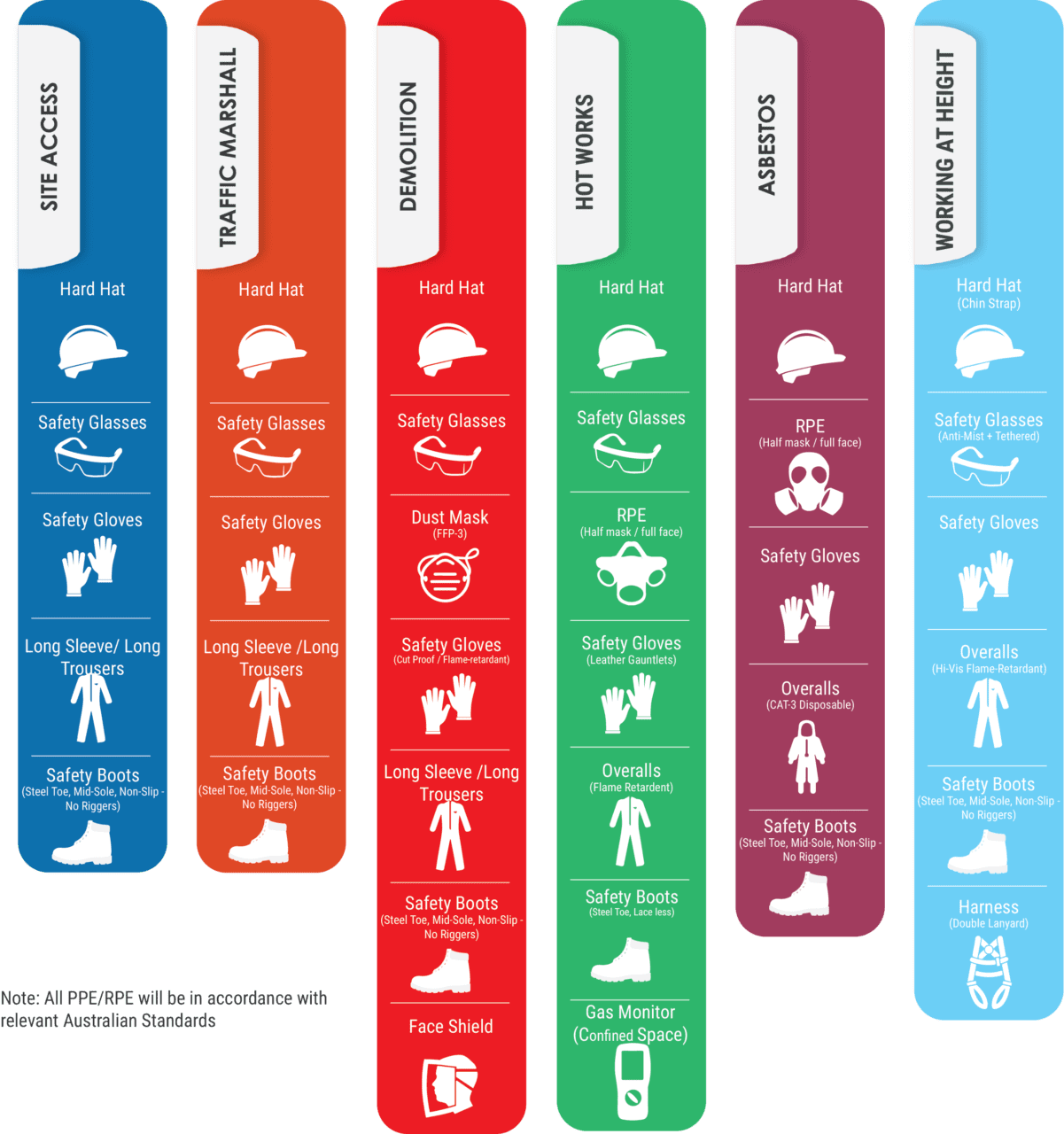
The demolition process: 9 steps to a construction-ready site
1. Hire a reputable demolition contractor
Engage an experienced demolition contractor with the proven capabilities, certifications and licences to manage the entire process for you.
Often, demolition contractors may be required to complete a prequalification process before being invited to tender. This helps to ensure that the chosen contractor has:
- Relevant licences (e.g., unrestricted Demolition Licence and unrestricted (friable) asbestos licence);
- A certified Health, Safety, Environmental and Quality (HSEQ) management system;
- Approved plant and equipment for your specific site;
Excellent safety and environmental statistics; and - Strong expertise in all aspects of demolition.
At Major Projects Group, we bring decades of unrivalled industry experience to every demolition. Our team holds relevant corporate and individual demolition and asbestos removal licences in most Australian states and territories, as well as all necessary insurances to perform any type of demolition works. Discover specialised demolition solutions that leverage cutting-edge and cost-effective engineering methodologies.
2. Survey the demolition site
The next step in the demolition process is to inspect the target structure and the land on which it has been built.
Firstly, the structure itself should be assessed to discern the underlying design, type of construction used, structural integrity and relevant building codes. This information will help to inform the safest and most suitable method of demolition.
As well as an initial site visit to determine the scope of work required, your contractor should conduct a pre-condition survey to identify potential health or environmental hazards of the demolition. Both the structure and surrounding site should be inspected for hazardous or flammable materials.
In Australia, you are legally required to confirm whether asbestos is present on the site and, if so, have it removed before any demolition or construction commences. If you are intending to develop the site after demolition, then you may need to obtain approval from an asbestos removal specialist as part of your Complying Development Certificate application.
3. Devise the demolition plan
Your contractor will develop a rigorous plan to identify the most appropriate approach to demolition and any potential risks that may arise. This Demolition Plan should cover key project details, such as the:
- Location of the structure to be demolished;
- Distances between the structure and any surrounding buildings, streets or particularly vulnerable zones such as hospitals and schools;
- Existing structural support systems;
- Method of demolition to be used and the sequence of tasks to be actioned;
- Demolition program or project timeline.
Other management plans should also be incorporated to detail the processes required to complete the project in accordance with the contractor’s integrated HSEQ management system, as well as the client and legislative requirements. Examples include:
- Health & Safety Management Plan (HSMP) to outline the contractor’s WHS policies, training, risk management process, subcontractors management, injury management and continuous monitoring and review.
- Waste Management Plan (WMP) to explain how debris will be removed from the site before, during and after the demolition. This is particularly important on sites with hazardous materials, such as asbestos.
- Environmental Management Plan (EMP) to detail the practices that must be followed to minimise and/or offset any detrimental environmental and social effects of the demolition.
- Quality Management Plan (QMP) to determine the activities and processes in place to ensure a high-quality outcome upon project completion, as per the contract terms.
- Industrial Relations Management Plan (IMP) to clarify how the contractor will comply with their obligations and communicate with the client throughout the demolition; and
- Traffic Management Plan (TMP) to allow for effective management and control of traffic and pedestrians during the demolition project.
4. Submit necessary notifications
The next step is to submit all required notifications of demolition work (and asbestos removal, if required) to the state or territory authority.
In general, this notification must be actioned at least five days before performing demolition works:
- On any structure, or a part of a structure that is load bearing or related to physical integrity, that exceeds six metres in height;
- That utilises load-shifting machinery on a suspended floor; or
- That involves the use of explosives.
However, stipulations vary according to the local authority. Learn more about demolition notifications in your area below:
5. Implement strict safety measures
Failure to comply with health and safety legislation during the demolition process can lead to expensive and irreparable consequences, such as physical injury, occupational disease and even death.
Therefore, it is vital that your demolition contractor abides by all safe working regulations and takes steps to mitigate risks during each stage of the project.
Major Projects Group implements a comprehensive risk management system that incorporates the principles and guidelines of ISO 13000:2018 Risk Management. Rest assured we follow the below safety measures on award of any contract:
Risk assessment workshops
Risk Assessment workshops will be conducted for each demolition in collaboration with the client’s representatives. This dynamic assessment includes the register of all identified risks, as well as any controls developed and implemented throughout the course of the project.
Safe Work Method Statement
In Australia, all high-risk construction work is legally required to be covered by a Safe Work Method Statement (SWMS). This document accounts for every major activity involved in completing the demolition, and details the measures in place to minimise associated risks.
Job Safety and Environment Analysis
A Job Safety and Environment Analysis (JSEA) assesses risks on a task level, detailing how each activity can be performed safely in step-by-step detail.
At Major Projects Group, we develop all of our SWMSs/JSEAs in close consultation with team members and other stakeholders, such as the client’s representatives. If there are any significant alterations to the scope of work as the project progresses, then the SWM/JSEA may be updated.
Site induction
We run each team member through site-specific inductions to ensure precise procedures have been explained and are fully understood. For example, workers are obliged to wear suitable Personal Protective Equipment (PPE) at all times on site.
Take 5
Under our SWMs, all on-site personnel are required to perform a Take 5 before beginning each task. This five-step safety checklist is used to flag potential hazards. By taking a few careful moments to register immediate risks in the surrounding environment, our team can make appropriate changes to their approach and stay safe.

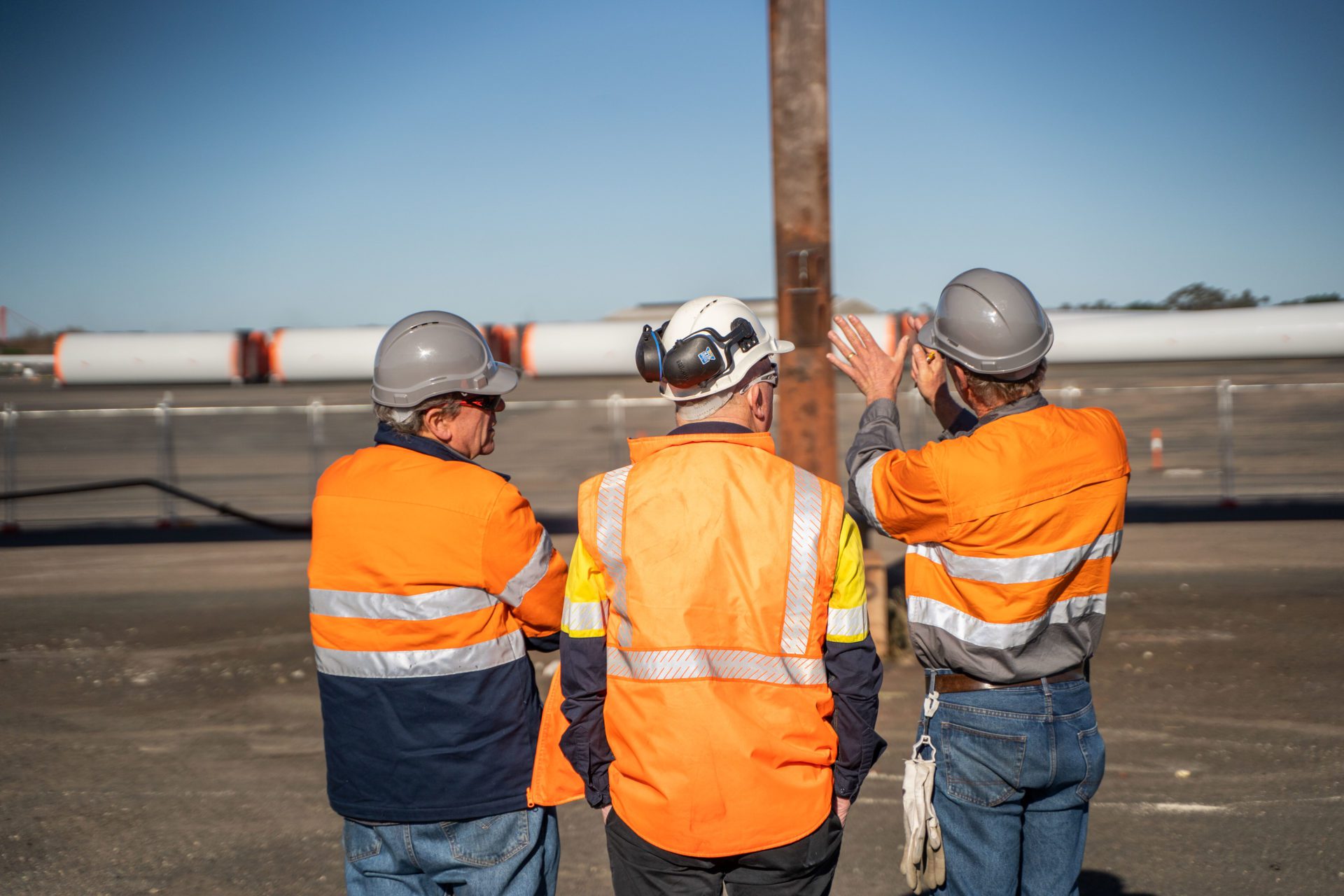
Daily job start meetings
The demolition supervisor (or a nominated representative) will run a job start meeting every day to communicate the scheduled work, as well as any activities that affect the program, to all personnel. This meeting is also an opportunity to discuss SWMs with relevant team members.
Toolbox talks
All team members attend weekly toolbox meetings on the demolition site. These important meetings assist project managers and demolition supervisors to explain safety protocols and provide a space for workers to discuss any related concerns. Where necessary, particular safety issues will be addressed, incidents reviewed, and SWMs reviewed and refined.

6. Remove hazardous materials
If hazardous materials, including asbestos minerals and flammable or radioactive substances, have been reported in the pre-condition survey, then certified professionals must dispose of them safely before demolition begins.
Holding a Class A (Friable) Asbestos Licence in most Australian states and territories, Major Projects Group partners with specialist subcontractors to access premium resources that ensure efficient and effective outcomes. Our comprehensive services include inspections, testing, consulting, air monitoring, abatement, encapsulation, disposal, waste management and more.
With start-to-finish asbestos and hazardous material removal available across Australia, you can enjoy peace of mind that your site is free from harmful contaminants. At this stage, your site should qualify for a Clearance Certificate – a crucial criteria for future construction.
7. Disconnect all utilities
Before the demolition works commence, it is essential that all gas, electricity and water supplies are disconnected from the property. As well as preventing damage to existing electrical systems and pipes, this essential step eliminates the risk of demolition workers encountering live wires or plumbing. In addition to posing a significant safety hazard to site personnel, this could also affect the provision of utilities to surrounding neighbours.
Telecommunication infrastructure, such as telephone lines and NBN infrastructure, must also be considered. Your provider will need to be notified of planned demolition works to confirm whether any lines need to be relocated or removed.
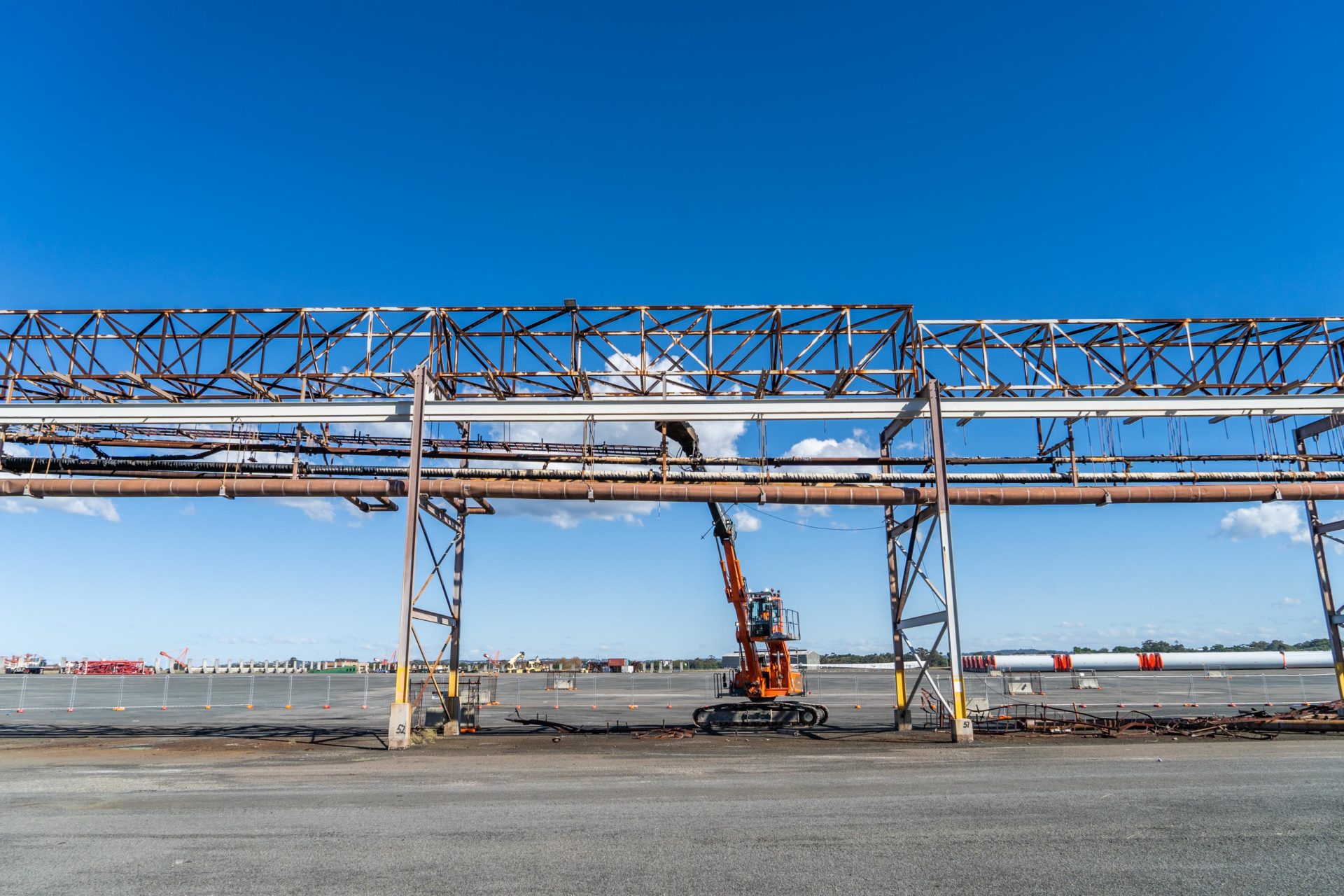
8. Action the appropriate method of demolition
Different demolition techniques will be employed depending on site conditions, project objectives and the surrounding environment. Importantly, the adopted approach should minimise damage to nearby structures, as well as the effects of dust, noise and traffic on any neighbours.
Learn about the two chief methods of demolition, mechanical and explosive, below.
Mechanical demolition
Mechanical or manual demolition utilises heavy machinery and hand tools to tear down the structure. Examples of demolition machinery include bulldozers, high-reach excavators, skid steer loaders, boom lifts, telehandlers, generators, prime movers and trailers.
Most suitable for demolishing small to medium-sized structures, this efficient process tends to take relatively fewer resources and is therefore utilised wherever possible by Major Projects Group.
Our experienced operators have access to an extensive fleet of modern plant and equipment, including a 250-tonne excavator with specialised and customised attachments. By investing in the latest and most fuel-efficient machinery, we strive to reduce project downtime and our own carbon footprint.
Explosive demolition
Often used for large industrial structures and tall buildings in heavily-populated locations, explosive demolition can only be performed by a certified specialist with approval from a regulatory authority. This is because the explosives must be placed and timed strategically to ensure a safe and controlled demolition.
With explosive demolition, a structure will typically fall in one of two ways:
- The structure falls to one side. This approach is used when there is sufficient free space surrounding the structure and therefore it has room to collapse without destroying other buildings, infrastructure or equipment. To ensure the structure falls in the right direction, steel cables are fixed to its side.
- The structure falls in on itself. Known as the implosive method, this tactic uses explosives to destroy the structural supports in such a way as to make the building cave inwards. Such a method is employed when there is limited space on the demolition site and surrounding structures must be preserved.
At Major Projects Group, our experienced engineers and licensed shot firers subcontractors are highly skilled in managing all risks relating to complex explosive demolitions.
9. Dispose of debris
The final step in the building demolition process is for all waste to be sectioned and removed accordingly, using machinery if necessary.
For example, any reusable materials, including timber, steel, copper and concrete, should be separated and recycled. Additionally, temporary signs and barriers need to be taken down so that your site is left clean and cleared for development.
Valuable items, such as hydraulic systems, switch room containers, conveyor pulleys and belts, can be salvaged at this stage.

Enquire about demolition with Major Projects Group
Demolition work is incredibly varied, but it should always include the above steps to ensure a safe and streamlined project. With a well-planned demolition process actioned by a reputable contractor, you can be confident that your site will be cleared on time and within budget.
Over 40 years strong, Major Projects Group is proud to be a Social Traders-certified Social Enterprise with an environmental focus and a dedication to innovation and excellence in demolition. Our expert team utilises a state-of-the-art fleet of specialised equipment and certified management systems to tackle the most complex demolitions in Australia.
To begin your industrial, marine or commercial demolition with Major Projects Group, enquire today on +61(0)2-4967-7900 or [email protected].


